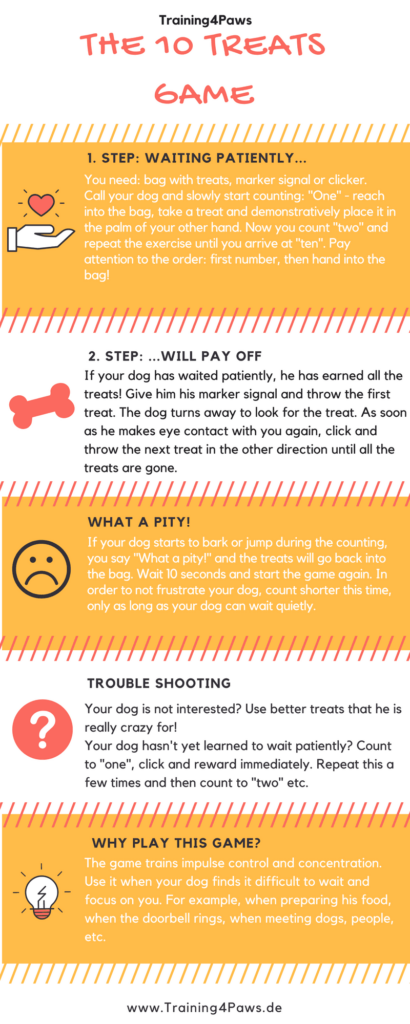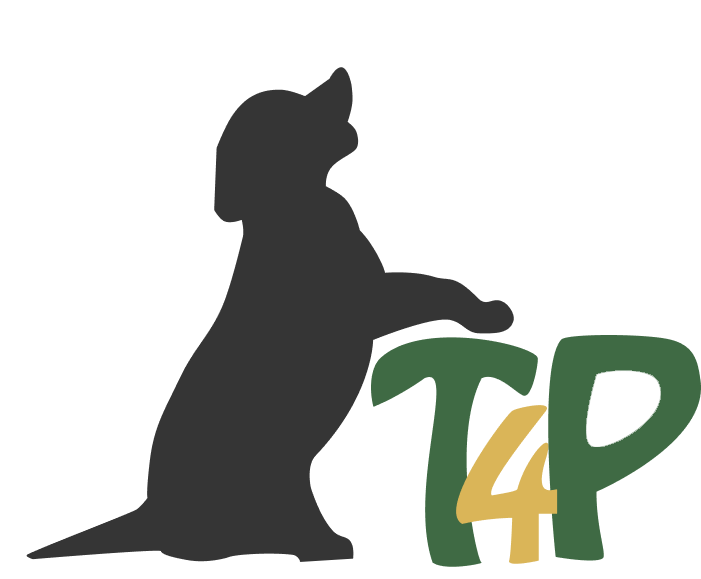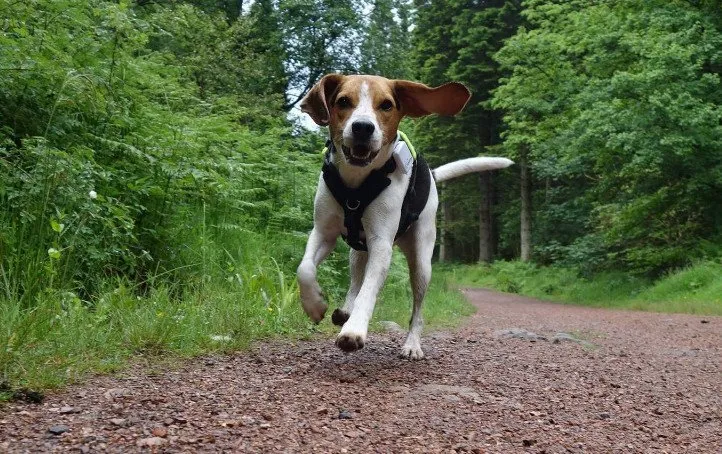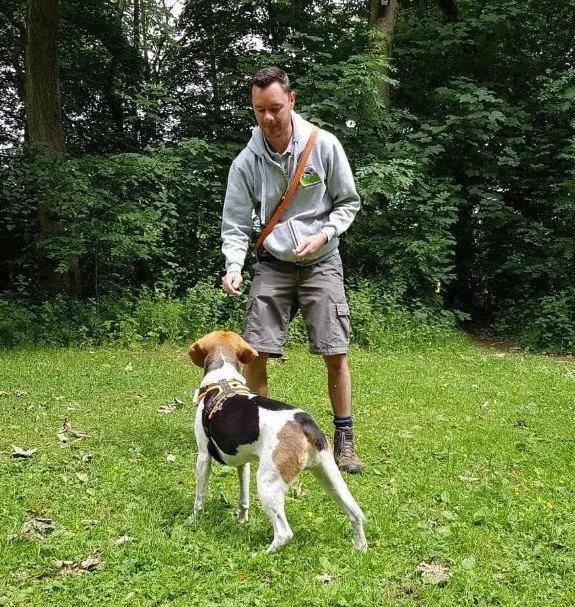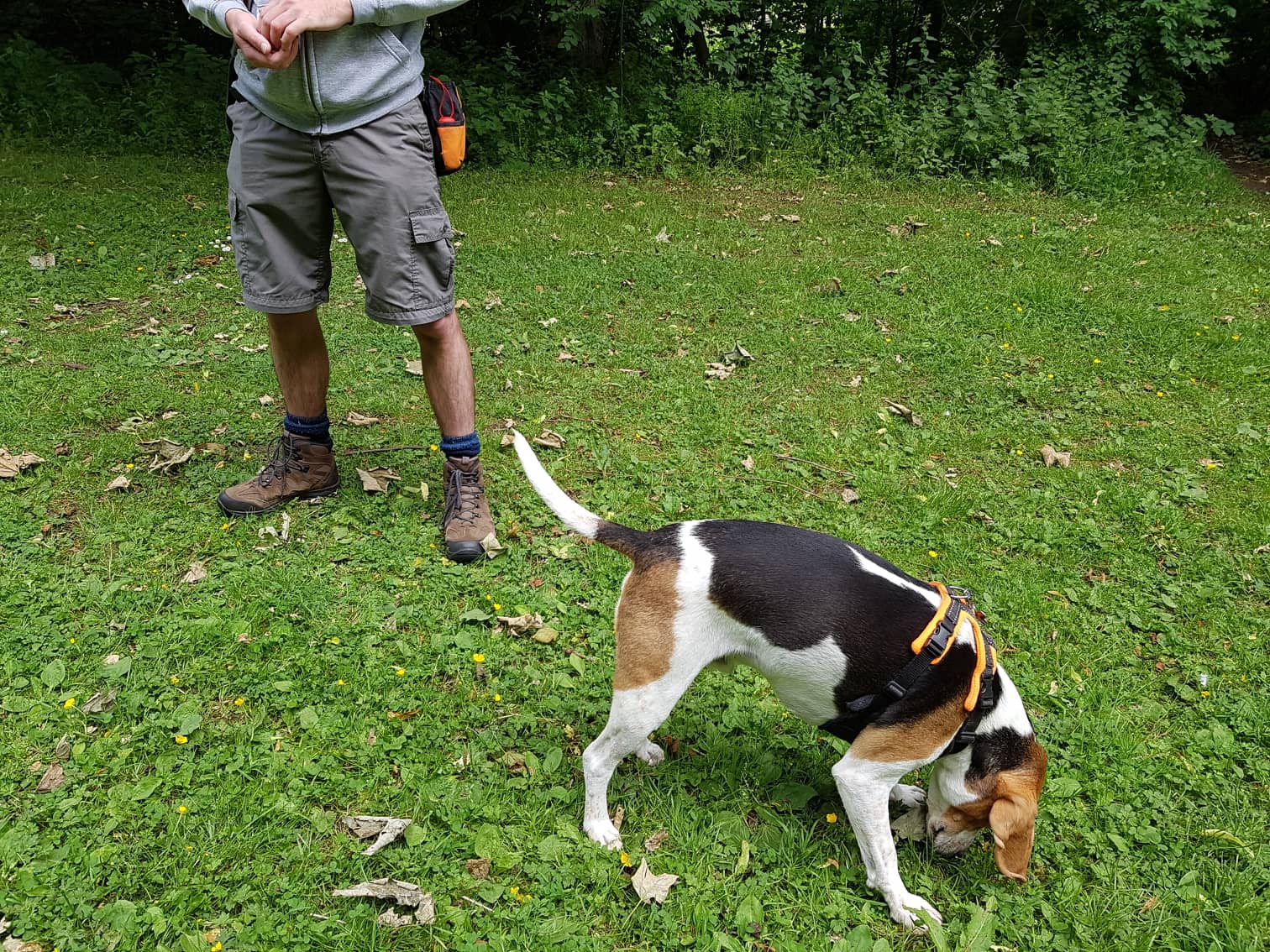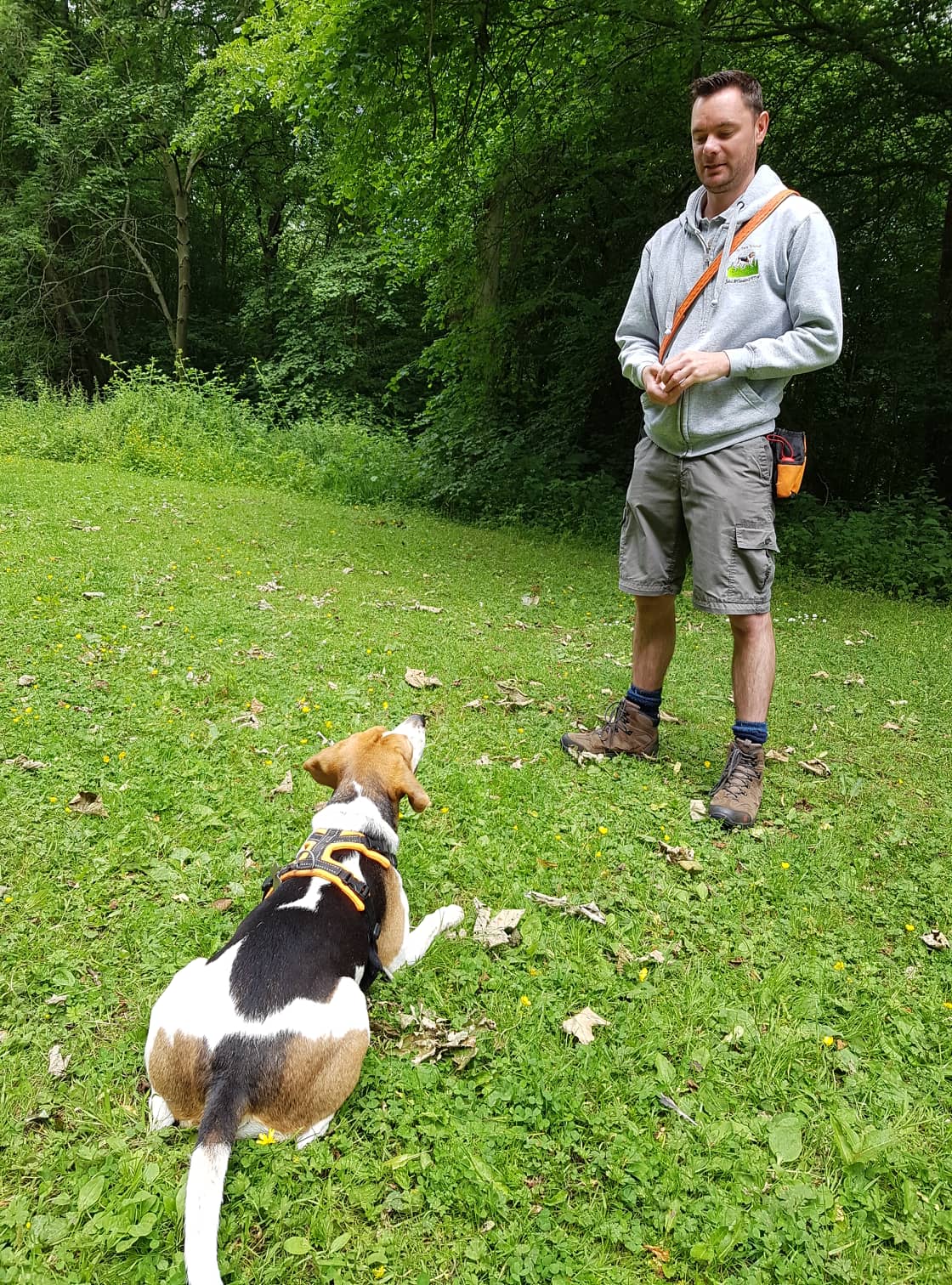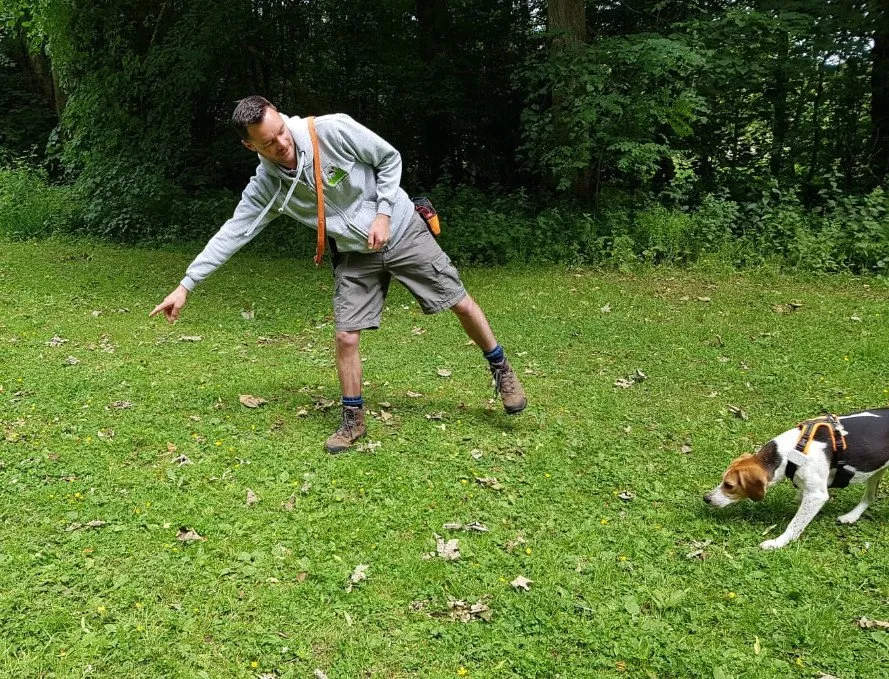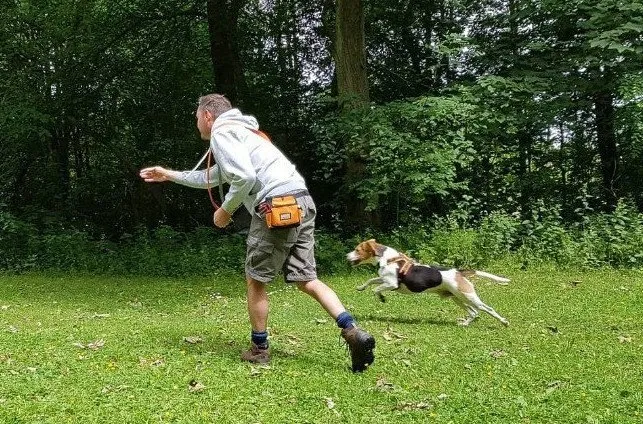Staying calm and focused with the 10 Treats Game
Your dog can't wait to run off to the horizon each time you unleash him? Play the 10 Treats Game for calmness and focus!
Junior is a hippie, living and letting live is his motto. On his walks, the Beagle-Harrier mix prefers to live in his own Junior world, which consists primarily of scavenging fancy foods in the park and hunting after interesting smells. He prefers flying towards the horizon with his ears waving, or charmingly gatecrashing the picnic of unsuspecting park visitors.
Many dog owners complain that their dog does not care about them outside. Once the leash is off, they only see their dog from behind. In fact, it is challenging for us humans to compete with the diverse environmental stimuli.
My trainer colleague John has his own dog walking business New Town Hounds in Edinburgh and he works as a trainer for Lothlorien Dog Services. Since he has adopted the Beagle-Harrier mix at the age of one, he’s diligently been training impulse control and engagement with Junior, to convince Junior to check in as often as possible in the human world before he can again pursue his own business in the dog world.
To fresh up Junior’s normal training routine, we play the 10 Treats Game with him.
Why play the 10 Treats Game?
The 10 Treats Game trains your dog’s impulse control and focus on you. Use it wherever your dog finds it difficult to wait calmly and concentrate on you. For example, on the doorstep or in the car before you go for a walk. Well established, it can later serve as a friendly interrupter in situations where you would like to reorient your dog towards you to ask for an alternative behavior. The variants of the 10 Treats Game serve very different sequences of the predatory drift and thus your dog’s innate canine needs will be met. And by the way, the game is great fun for your dog and it promotes the relationship between you.
The Basic Game
Step 1: Waiting patiently…
John needs a bag of treats and a marker signal or a clicker. He calls Junior and slowly starts counting: “One”, John waits a second, reaches into the bag, takes a treat, and puts it demonstratively in the palm of his other dog. Now he counts “two” and repeats the exercise until he reaches ten.
Pay attention to the order: first the number, wait a second, then reach into your bag.
Step 2: … pays off!
If Junior waited patiently, he has earned all the treats. John gives him his marker signal or a click and throws the first treat. Junior now turns away to look for the treat. As soon as he makes eye contact with John again, John marks and throws the next treat in the other direction until all the cookies are gone. To let Junior know that the game is over and that there’s no point getting frustrated over waiting for more treats, John ends the game with a “That’s it!”
What a pity!
If Juior starts barking or jumping impatiently during the counting, John will regretfully say “What a pity!” and all the treats go back into the bag. John waits 10 seconds and then starts the game again. In order to not frustrate Junior, he counts shorter this time, only as long as Junior can wait patiently.
What can go wrong?
Junior is not interested? Unlikely! But if that’s really the case, John should use treats of higher value.
Junior hasn’t yet learned to wait patiently? No problem! To make it easier for Junior, John counts only to “one”, clicks immediately and throws the treat. Next time he can count to “two” and so on.
The Variations
What is your dog’s favourite hobby?
The basic structure of the 10-treats game is always the same: Count to ten while your dog is waiting patiently. As a reward you mark and throw the first biscuit. With the remaining nine treats you can bring variety into the game. All variations are sequences from predatory drift and serve different innate canine needs.
Sniffing
Junior loves to sniff for treats in the grass. While Junior is still looking for the first treat, John throws the second treat unnoticed to the other side. As soon as Junior checks in with John again, John invites him with a hand gesture and his cue “find” to search for the second treat. And while Junior is sniffing, John throws the third cookie and so on.
Chasing
Even more than sniffing, Junior loves to chase the prey. John throws the first treat and as soon as Junior checks in with John again, John marks and energetically throws the second treats to the other side.
Tip: Find out what your dog likes most: Tossing the treat in a high arc or bowling it along the ground?
Chasing the prey together
Junior is looking for the first treat. When he checks in with John again, John marks and runs a few steps in the opposite direction. As soon as Junior has caught up with him, John throws the second treat.
Stalking
John combines the 10 Treats game with the Stalking Game. When Junior checks in after the first treat, John gives him his cue “Stalk”. Junior stops in motion and only follows the treats with his eyes, which John zigzags back and forth. With a “get it” John ends the stalking sequence and throws the treat, so that Junior can jump after it.
Ending the 10 Treats Game without frustration
When all the treats are gone, John ends the game with a “That’s it” to let Junior know that no more treats are about to come and that he can now fly off to the horizon.
Don’t be afraid of prey games!
It’s not possible to increase the prey drive of your dog by playing prey games. On the contrary, if he has the opportunity to regularly live out this need together with you, in the future, hunting will not be so important to him anymore.
Tip: Play the 10 Treats Game and the Stalking Game with your cat! Your cat will love it!
Hunting is your dog’s favourite hobby? Try Cooperative Hunting!
What works even better than a simple recall? – The Double Recall!
Thank you John and Junior for a lovely Saturday afternoon walk in Edinburgh!
See the cheat sheet below for your training:
